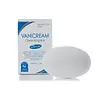What's inside
What's inside
 Key Ingredients
Key Ingredients

No key ingredients
 Benefits
Benefits

 Concerns
Concerns

 Ingredients Side-by-side
Ingredients Side-by-side

Sodium Cocoyl Isethionate
CleansingStearic Acid
CleansingCoconut Acid
CleansingSodium Isethionate
CleansingCoco-Glucoside
CleansingWater
Skin ConditioningSoyethyl Morpholinium Ethosulfate
Cetearyl Alcohol
EmollientSodium Methyl 2-Sulfolaurate
CleansingArgania Spinosa Kernel Oil
EmollientAvena Sativa Kernel Flour
AbrasiveSucrose Cocoate
EmulsifyingTocopherol
AntioxidantSodium Isostearoyl Lactylate
EmulsifyingCI 77492
Cosmetic ColorantSodium Cocoyl Isethionate, Stearic Acid, Coconut Acid, Sodium Isethionate, Coco-Glucoside, Water, Soyethyl Morpholinium Ethosulfate, Cetearyl Alcohol, Sodium Methyl 2-Sulfolaurate, Argania Spinosa Kernel Oil, Avena Sativa Kernel Flour, Sucrose Cocoate, Tocopherol, Sodium Isostearoyl Lactylate, CI 77492
Sodium Cocoyl Isethionate
CleansingStearic Acid
CleansingWater
Skin ConditioningCoconut Acid
CleansingSodium Isethionate
CleansingSodium Lauroyl Sarcosinate
CleansingSodium Laurate
CleansingSorbitol
HumectantPropanediol
SolventCetearyl Alcohol
EmollientGlyceryl Stearate
EmollientSimethicone
EmollientSodium Chloride
MaskingPetrolatum
EmollientCeteareth-20
CleansingPEG-30 Stearate
EmulsifyingPEG-20
HumectantTitanium Dioxide
Cosmetic ColorantIngredients Explained
These ingredients are found in both products.
Ingredients higher up in an ingredient list are typically present in a larger amount.
Cetearyl alcohol is a mixture of two fatty alcohols: cetyl alcohol and stearyl alcohol. It is mainly used as an emulsifier. Emulsifiers help prevent the separation of oils and products. Due to its composition, it can also be used to thicken a product or help create foam.
Cetearyl alcohol is an emollient. Emollients help soothe and hydrate the skin by trapping moisture.
Studies show Cetearyl alcohol is non-toxic and non-irritating. The FDA allows products labeled "alcohol-free" to have fatty alcohols.
This ingredient is usually derived from plant oils such as palm, vegetable, or coconut oils. There is debate on whether this ingredient will cause acne.
Due to the fatty acid base, this ingredient may not be Malassezia folliculitis safe.
Learn more about Cetearyl AlcoholCoconut Acid isn't fungal acne safe.
Sodium cocoyl isethionate is a natural ingredient from coconut oil. It is an ultra gentle cleanser that gives a nice foam without drying the skin or impacting the skin barrier.
The amount of foam created depends on the amount of sodium cocoyl isethionate used in the product.
This ingredient also helps improve the spreadability of a product.
Learn more about Sodium Cocoyl IsethionateWe don't have a description for Sodium Isethionate yet.
Stearic Acid is a fatty acid. It is an emollient, emulsifier, and texture enhancer.
As an emollient, stearic acid helps soften skin. It aids the skin's protective barrier by preventing water loss. It also provides a gentle cleansing effect without stripping away natural oils.
Stearic acid may also be used to enhance the texture of products. It can add volume and stabilize ingredients such as water and oil. This can help water and oil ingredients from separating.
Sources of stearic acid include animal or vegetable fats/oils such as coconut or shea. It can be naturally found in butter, cocoa butter, shea butter, vegetable fats, and animal tallow.
This ingredient may not be Malassezia folliculitis, or fungal-acne safe.
Learn more about Stearic AcidWater. It's the most common cosmetic ingredient of all. You'll usually see it at the top of ingredient lists, meaning that it makes up the largest part of the product.
So why is it so popular? Water most often acts as a solvent - this means that it helps dissolve other ingredients into the formulation.
You'll also recognize water as that liquid we all need to stay alive. If you see this, drink a glass of water. Stay hydrated!
Learn more about Water